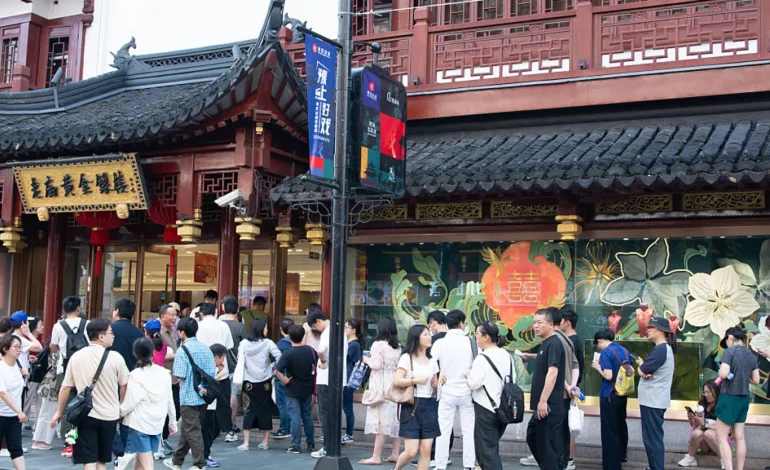China’s economy delivered a mixed performance in May, with retail sales posting their strongest growth in over a year while industrial production slowed, reflecting the country’s complex recovery path amid trade tensions and domestic challenges.
Official data released Monday by the National Bureau of Statistics showed retail sales rose 6.4% year-on-year in May, exceeding expectations and marking the fastest pace since December 2023. The growth was driven in part by government subsidies and an earlier start to the country’s major “618” online shopping festival, as well as expanded visa-free travel policies that boosted tourism-related consumption.
By contrast, industrial production rose 5.8% from a year earlier, a deceleration from April’s 6.1% and the slowest rate in six months. The slowdown was attributed to weaker external demand and ongoing effects of elevated US tariffs on Chinese goods.
The contrasting data points come as China continues to navigate economic pressures tied to its property sector downturn, deflationary risks, and a fragile truce in its trade dispute with the United States. A recent agreement between Washington and Beijing in mid-May provided temporary relief, rolling back some tariffs that had reached as high as 145%. However, both sides have since raised concerns over compliance with the terms, keeping bilateral trade relations uncertain.
May’s retail sales data outperformed analyst forecasts, with notable contributions from subsidies tied to a government-backed consumer goods trade-in program. Shoppers received incentives to upgrade items like electronics, vehicles, and appliances. However, many local governments have since paused the program after budget constraints limited its sustainability.
Analysts noted that the retail uptick likely benefited from one-off factors and may not indicate a lasting shift in consumer behavior.
“Without further demand-side stimulus, we expect that the consumption recovery will be short-lived,” said Jianwei Xu, senior economist at Natixis.
Industrial output’s slower growth reflects broader challenges for China’s manufacturing base. Despite efforts to reroute exports and tap into markets beyond the US, shipments to the US fell by 34.5% in May — the steepest decline since early 2020.
Meanwhile, China’s fixed-asset investment grew 3.7% in the first five months of the year, down from 4.0% during the January-April period. Real estate investment, a longstanding pillar of China’s economy, continued to decline, falling 10.7% year-on-year in the January-May period. New home prices in major cities dropped further in May, continuing a multi-year downward trend despite government efforts to stabilize the sector.
China’s urban unemployment rate edged down slightly to 5.0% in May from 5.1% in April. However, consumer prices declined for the fourth consecutive month, underscoring persistent deflationary pressure. Producer prices, which often indicate future inflation trends, fell 3.3% year-on-year.
Economists at Goldman Sachs said the recent retail sales strength, along with resilient export figures to non-US markets, may give Beijing more time before it considers new stimulus measures. Still, with core economic indicators sending mixed signals, many expect the government to expand fiscal support later in the year if growth shows signs of slipping below its roughly 5% annual target.
While the retail rebound offered a rare bright spot for the Chinese economy, analysts remain cautious. Structural challenges, including weak property investment, fragile consumer confidence, and unresolved trade tensions with the US, continue to weigh on longer-term prospects.
“As long as stimulus is targeted, like in consumer subsidies, we see short-term gains. But without broader, sustained support, China’s recovery will remain uneven,” said Tianchen Xu of the Economist Intelligence Unit.
The Financial Times, the Wall Street Journal, Bloomberg, Reuters, and CNBC contributed to this report.










The latest news in your social feeds
Subscribe to our social media platforms to stay tuned